Search Results for 'Irish War of Independence'
30 results found.
Black and Tans spotted in Connemara in run up to GIAF show
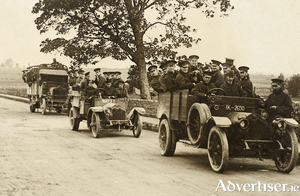
Members of the public travelling west of An Spideál had quite a shock recently when a 1920s era Saracen truck, with a full complement of Black and Tans, was spotted speeding along the R336 at various times of the day.
June 1921 - Britain continues to deny policy of reprisal killings and house burnings in Galway

The election, on May 24 1921 in the six counties of what was to become Northern Ireland, resulted in the Unionist Party winning 40 of the 52 seats. Catholics in the six counties would now be forced to stare down the barrel of partition and sectarianism as a new order was set in place.
100 years since Oranmore’s Joe Howley was shot

In the centre of Oranmore, stands a statue to a local man who was shot in Dublin one hundred years ago this week. Joe Howley, Officer Commanding Number One Brigade IRA Galway was killed leaving what is now Heuston Station, Dublin on December 4 1920, and was pronounced dead at 12.30 a.m. December 5 in George V Hospital Dublin.
The Black and Tans' raid on O’Flaherty’s Pub
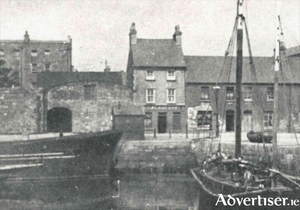
The tall building in the centre of our picture of New Docks Road taken in 1903 was known as “Gas Tank” Flaherty’s pub. We presume he got his nickname because of the gasworks across the street. It was here that the distinguished English painter Augustus John lived for several weeks in 1914. He did a lot of painting and drawing around the city and especially the docks area, but when the World War I started, he began to worry that the locals would regard him as an English spy, so he went back to England.
Public talk on Galway RIC men on opposing sides in the revolution
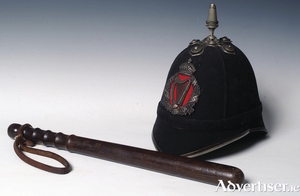
TWO RIC men with Galway connections, and the very different parts they played during the revolutionary period, will be the subject of two public talks at the Galway City Museum this weekend.
Talk on shooting of Bonniconlon RIC sergeant in Ballina
A bloody episode during the War of Independence will be the subject of a talk in Ballina Library on Wednesday next September 7. On Thursday March 4 of 1920, two young RIC constables, returning from patrol, called to Fanning’s public house at Bouladuff (knows as The Ragg), near Thurles to buy some provisions. Unknown to them, also in the same public house were three prominent officers of the Mid Tipperary Brigade of the IRA. In an attempt to disarm the policemen, a melee ensued in which Galway born Constable John Heanue was fatally wounded.
‘What the hell is going on?’
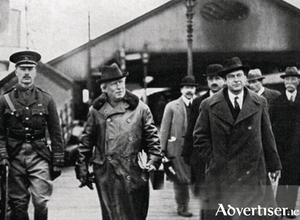
‘What the hell is going on?’ appears to be what the British Prime Minister Herbert H Asquith, is thinking as he disembarks at Dun Laoghaire on May 12 1916, almost three weeks after the Easter Rising. Following six days of intensive fighting, Dublin city centre was unrecogniseable. Practically all its main buildings were destroyed either by artillery fire or burnt out. The list of casualities was horrendous. One hundred and sixteen army dead, 368 wounded, and nine missing. Sixteen policemen died, and 29 wounded. And this at a time when Britain was fighting an appalling war in France, which seemed unending, and its mounting causalities were not only threatening his government’s survival, but had filled the British people with dread and alarm.
Thomas ‘Baby’ Duggan
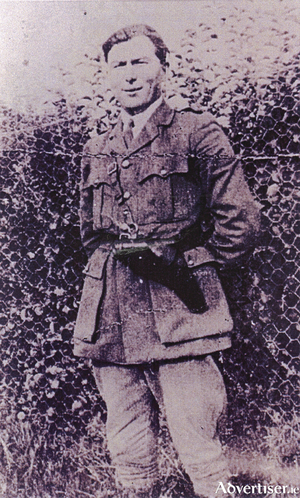
Thomas Duggan was popularly known as “Baby” because of the contrast to his considerable proportions. He was born in 1899. Although only a boy, he was one of the first to take up arms with Liam Mellows in the lead up to the Rising. When the Rising was quelled, he was arrested with many others and interned at Frongoch. He was kept there until Christmas, when he was released under a general amnesty.
Local papers and their role in our history
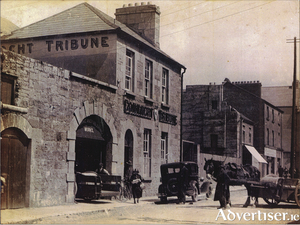
In 1909 Galway was at a low ebb, the population was just over 3,000, the local economy was in poor shape, the canal and the docks were not being well used commercially, the student population of UCG was 131, there was very little manufacturing, and local politics was still bedevilled by the Parnell split. There were two local newspapers, The Connacht Champion which actively supported William Smith O’Brien MP and often virulently attacked the Irish Parliamentary Party, and The Galway Express which originally supported the conservative unionist viewpoint, but which gradually became more nationalist until its premises were wrecked in 1920 by the Black and Tans.
Peg Broderick-Nicholson and the War Of Independence
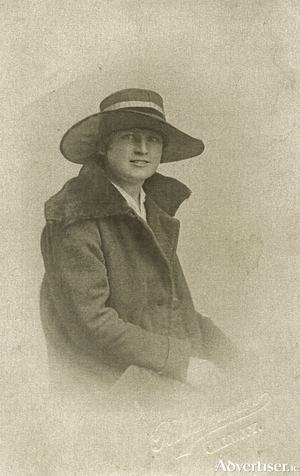
Peg was born at 17 Prospect Hill of parents with a strong nationalist outlook. She went to school in ‘The Pres’, where after the 1916 Rising there was a pitched battle between the wearers of the red, white, and blue badges (common during World War I) and those wearing green, white, and gold badges. The green side won, but then all the badges were confiscated by Mother Brendan.

